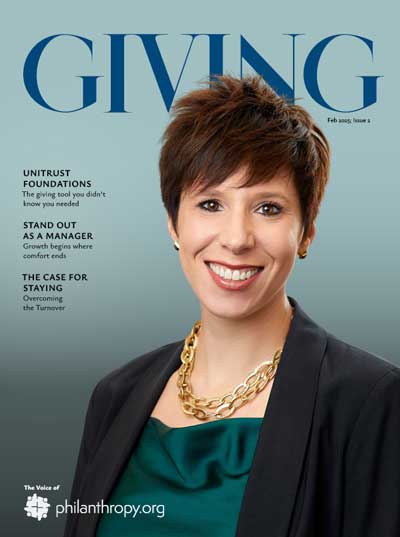Originally published September 14, 2010. Updated and rewritten for today.
Neglect your nonprofit's blog, and you chip away at trust—right when you're asking for "forever."
Everyone in nonprofit marketing has heard it:
“You need a blog. Everyone has a blog. Just post something.”
Mr. John Everyone, Marketing Expert
And so, with great enthusiasm and zero strategy, a blog is born.
Then neglected. Then forgotten.
And then left to rot—like a once-promising fruit bowl turned science experiment.
What no one tells you is this:
A bad nonprofit blog doesn’t just look lazy. It proves it. And in the nonprofit world where donors are considering leaving you in their will or estate plans—lazy is lethal.
You’re asking someone to trust you with their legacy, their values, their wealth.
So when they click your nonprofit’s “Blog” and land on something that hasn’t been touched since the last election cycle?
No need to tell you what happens next.
Because if you can’t manage your own content, why should anyone trust you to manage their estate?
The Dangerous Myth: “Just Show Up”
At some point, some people bought into a seductive little lie:
“Be online. Get a blog. Post something. That’s enough.”
It’s not.
This idea—that simply showing up digitally is somehow a strategy—has cluttered the internet with millions of abandoned blog graveyards. And if you’re reading this while staring at your own neglected “News & Insights” tab, you already know the truth:
Effortless presence equals invisible results. Hmm … perhaps negative results.
“Set it and forget it” might work for crockpots. Not for legacy marketing.
A dead blog doesn’t just sit there quietly. It broadcasts:
- “We’re behind the times.”
- “We start things we don’t finish.”
- “We care about appearances, not follow-through.”
And here’s the kicker:
Your nonprofit’s blog is just one piece of your overall image. But like showing up to a donor meeting in a sharp suit and scuffed shoes, one neglected detail can blow the whole impression.
It tells your prospects: If this is how you handle your own content, how will you handle my estate?
Because in planned giving, you’re not just communicating. You’re auditioning for trust.
Blogging Isn’t About Frequency. It’s About Presence.
This isn’t about how often you post. It’s about whether anyone cares when you do.
A vibrant blog signals that you’re awake, thinking, and paying attention. It shows that your organization is engaged—with the world, with your mission, and with your audience.
It says: We’re active. We’re present. We’re leading.
A dead nonprofit blog says something else entirely: We’ve moved on. Maybe you should too.
Donors don’t need more noise. They need relevance. They need to see signs of life. They need to know that if they trust you with something as personal as a legacy gift, you’ll still be around—and tuned in—five years from now.
Yes, we’ve said it before: trust and authority matter. And if that sounds repetitive, good. Because it’s the part most nonprofits still get wrong.
A living, relevant blog reinforces both.
Want a real-world example of what that looks like? Visit Philanthropy.org — where we amplify bold, timely, and informed voices from across the sector.
If You’re Going to Blog, Do It Right
A good blog:
- Offers fresh, practical insights.
- Speaks in a real voice (not boardroom jargon or performative impact metrics).
- Builds credibility and boosts SEO.
- Encourages repeat visits and longer time-on-site.
- Turns casual visitors into engaged supporters.
That’s not wishful thinking. That’s a fact—if you commit to doing it right. Otherwise, skip it. Archive it. Remove the tab.
Don’t publish filler just because someone told you to. And definitely don’t mistake storytelling for impact just because it sounds like it came from a grant committee with a thesaurus and a deadline.
Spontaneity Is the New Authority
Artificial intelligence can support your thinking—not replace it. And when it’s abused, it shows.
Today’s donor wants clarity. Relevance. A human voice that actually gives a damn.
This isn’t about posting to your nonprofit’s blog daily. It’s about writing with purpose—topical, sharp, intentional.
Think of your blog like a handshake. If it’s limp, it doesn’t matter how often you offer it—especially when it’s dressed up to sound inclusive, approved, and completely forgettable.
Legacy Giving Demands More Than Lip Service
You’re not selling cookies. You’re guiding people toward a powerful, often emotional decision about their legacy.
So what happens when they click “Blog” and find… nothing? Or worse: outdated information from 2014 and recycled posts from your CRM vendor.
They leave. And they don’t come back.
But when your blog reinforces credibility, speaks directly to donors, and makes the complex feel simple? That’s where trust begins.
Silence Is Better Than Sloppiness
A strong blog builds trust. A lazy one quietly erodes it. And no blog at all? Still better than something that makes you look like you’ve checked out.
So don’t be a ghost. And don’t be noise. Be present. Be sharp. Be useful.
If you’re going to blog, own it. Mean it. Otherwise, take it down—and focus your energy where it actually moves the needle.
Because donors can smell indifference. And nothing says “We’re not ready for your legacy” like content that gave up halfway through.
And I’m telling you this from personal experience. I’ve made the mistake. I’ve watched others make it. It’s easy to launch. Harder to sustain. But critical to get right.
And, as Patrick O’Donnell, Editor-in-Chief of Philanthropy.org and GIVING magazine says, here’s the part too many nonprofits are missing right now: AI alone won’t save your blog. In fact, when misused, it makes things worse—faster. The soul goes first, then the trust.
AI alone won’t save your blog. In fact, when misused, it makes things worse—faster. The soul goes first, then the trust.
Patrick O'Donnell Tweet
Use it to sharpen your message—not replace your voice.
Because your donors aren’t fooled. And they’re definitely not inspired by recycled noise — especially now, when they are hit with over 3000 marketing messages a day.
I nearly made that mistake myself. Patrick helped me see it before I did. He caught it. I fixed it. Now you don’t have to learn the hard way.
Patrick also interviews donors professionally—your donors—and helped us develop our popular 101 Clever Questions that Unlock Planned Gifts.
He’s not just an editor. He’s a listener, a translator, and a strategist who understands how real conversations build real legacy relationships.
Trust me—your future donors will notice the difference.



